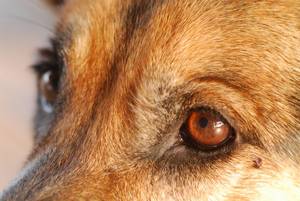Dealing With Dog Food Allergies

Up to 20 per cent of dogs have skin problems due to allergies. Amongst other things these can be triggered by food and contact, make the animal very itchy and drive both owner and dog crazy.
While scratching is the most obvious sign that a dog is itchy, there are other signs such as licking, particularly the paws, biting and chewing, rubbing the body along the ground or, in the case of itchy ears, shaking the head.
You may sometimes see other signs such as reddened skin, hair loss, pimples, weeping or flaking skin. Allergic skin is normally inflamed, which raises the skin temperature and humidity and makes the environment perfect for bacterial and fungal growth. Skin infections are common in dogs with allergic skin diseases.
The following are some of the more common types of allergies in dogs.
Contact allergies
These are, as the name suggests, allergies to substances the dog directly comes into contact with, such as bedding, grasses or other plants, and household cleaners.
|
"Areas covered with thin hair are particularly vulnerable, as they do not have the same protection as those with more fur." |
It should not be confused with contact irritation, where the dog is in contact with an irritant such as nettles or harsh shampoos. With contact irritation, the redness and itching will start almost immediately, but with an allergy the signs may take longer to develop.
The symptoms will be seen anywhere the allergenic substance makes contact, commonly the feet and underbelly. Areas covered with thin hair are particularly vulnerable, as they do not have the same protection as those with more fur.
As with atopy, identifying the offending substance and avoiding it is the best treatment, but similar types of shampoos may assist.
 Food
allergies
Food
allergies
Dogs that are allergic to certain types of foods, often proteins, may only display symptoms on the skin, or a combination of skin and gut signs such as vomiting and diarrhea. Beef allergies are common.
These allergies do not have a characteristic distribution on the body and tend to occur all year round. Normally they take time to develop, so occur more commonly in dogs more than two years old.
A dietary trial is a good way to determine whether a food allergy is the cause of the problem, using foods with different protein sources such as fish or chicken (ideally one the animal has not been exposed to before).
There are commercial allergy diets available or you could make up a home-made meal, but for your pet's sake ensure it is nutritionally balanced. The dog will need to stay on this diet for at least eight weeks before you can assess whether it is beneficial. You will need to make sure that the dog is not given any other treats which could contain allergens during this period, including meaty heartworm preventatives (there are non-meat-flavored options available).
|
"There can also be more
sinister causes, such as hormonal problems or tumors, so it is always advisable to contact your veterinarian if you have any concerns." � |
Allergies are not the only source of itching, with parasites also being a common cause. There can also be more sinister causes, such as hormonal problems or tumors, so it is always advisable to contact your veterinarian if you have any concerns.
Your vet may perform a physical examination, a skin scrape or biopsy, a sticky tape preparation or suggest blood tests or allergy tests to determine the cause of the itching.
Allergic dogs may have more than one allergy. Some will require prescription medications such as antihistamines or corticosteroids to get on top of the itching, at least initially. Your veterinarian may also recommend a course of desensitizing injections, similar to vaccinations, to reduce the allergy level. These can be used in conjunction with shampoo and flea and dietary therapy as a long-term option to manage the allergy .
�
�
|
References
|
| References: 1. What is Shampoo Therapy? Dermapet� Inc. http://www.dermapet.com/ |